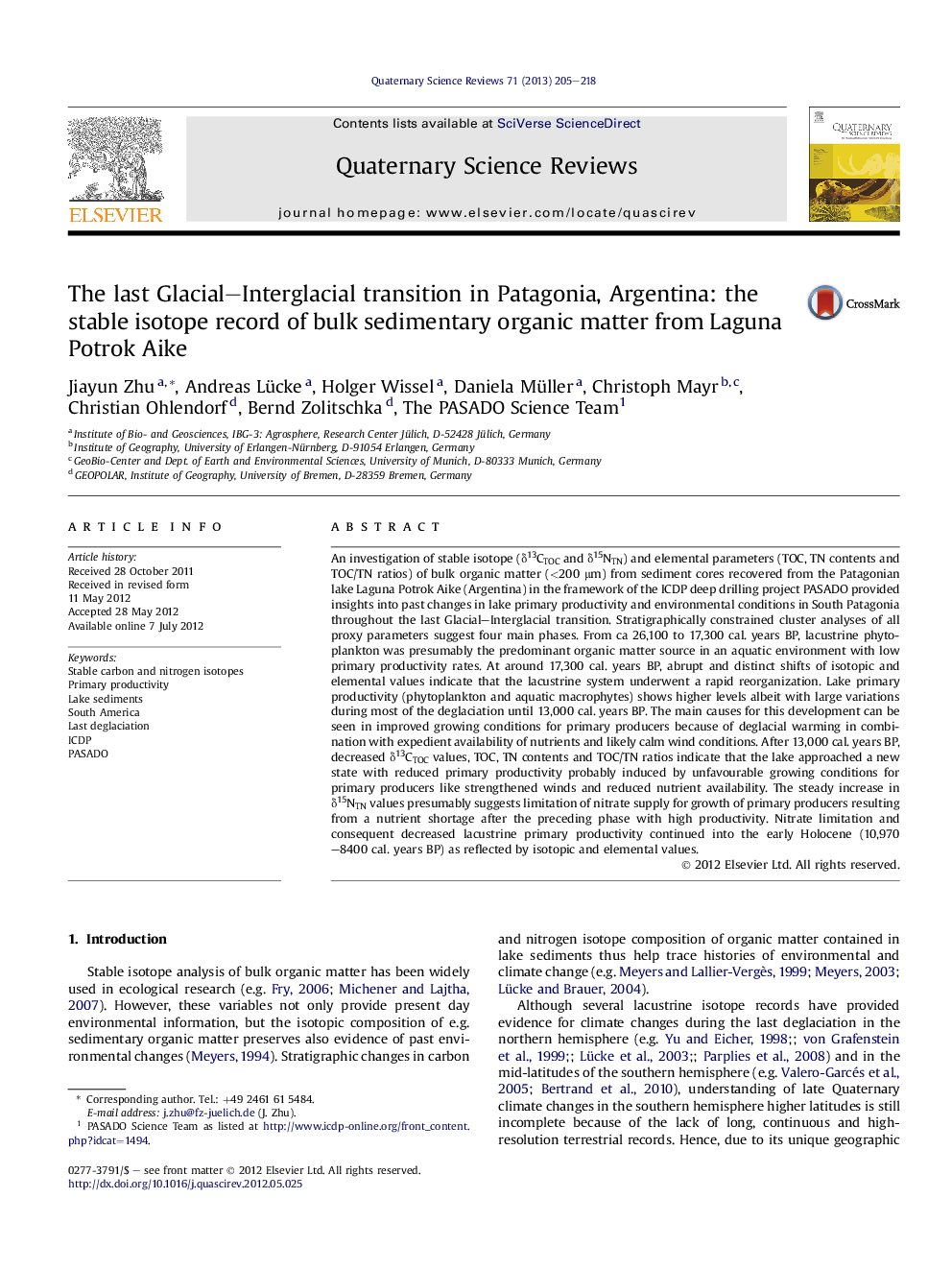| Article ID | Journal | Published Year | Pages | File Type |
|---|---|---|---|---|
| 4736880 | Quaternary Science Reviews | 2013 | 14 Pages |
An investigation of stable isotope (δ13CTOC and δ15NTN) and elemental parameters (TOC, TN contents and TOC/TN ratios) of bulk organic matter (<200 μm) from sediment cores recovered from the Patagonian lake Laguna Potrok Aike (Argentina) in the framework of the ICDP deep drilling project PASADO provided insights into past changes in lake primary productivity and environmental conditions in South Patagonia throughout the last Glacial–Interglacial transition. Stratigraphically constrained cluster analyses of all proxy parameters suggest four main phases. From ca 26,100 to 17,300 cal. years BP, lacustrine phytoplankton was presumably the predominant organic matter source in an aquatic environment with low primary productivity rates. At around 17,300 cal. years BP, abrupt and distinct shifts of isotopic and elemental values indicate that the lacustrine system underwent a rapid reorganization. Lake primary productivity (phytoplankton and aquatic macrophytes) shows higher levels albeit with large variations during most of the deglaciation until 13,000 cal. years BP. The main causes for this development can be seen in improved growing conditions for primary producers because of deglacial warming in combination with expedient availability of nutrients and likely calm wind conditions. After 13,000 cal. years BP, decreased δ13CTOC values, TOC, TN contents and TOC/TN ratios indicate that the lake approached a new state with reduced primary productivity probably induced by unfavourable growing conditions for primary producers like strengthened winds and reduced nutrient availability. The steady increase in δ15NTN values presumably suggests limitation of nitrate supply for growth of primary producers resulting from a nutrient shortage after the preceding phase with high productivity. Nitrate limitation and consequent decreased lacustrine primary productivity continued into the early Holocene (10,970–8400 cal. years BP) as reflected by isotopic and elemental values.
